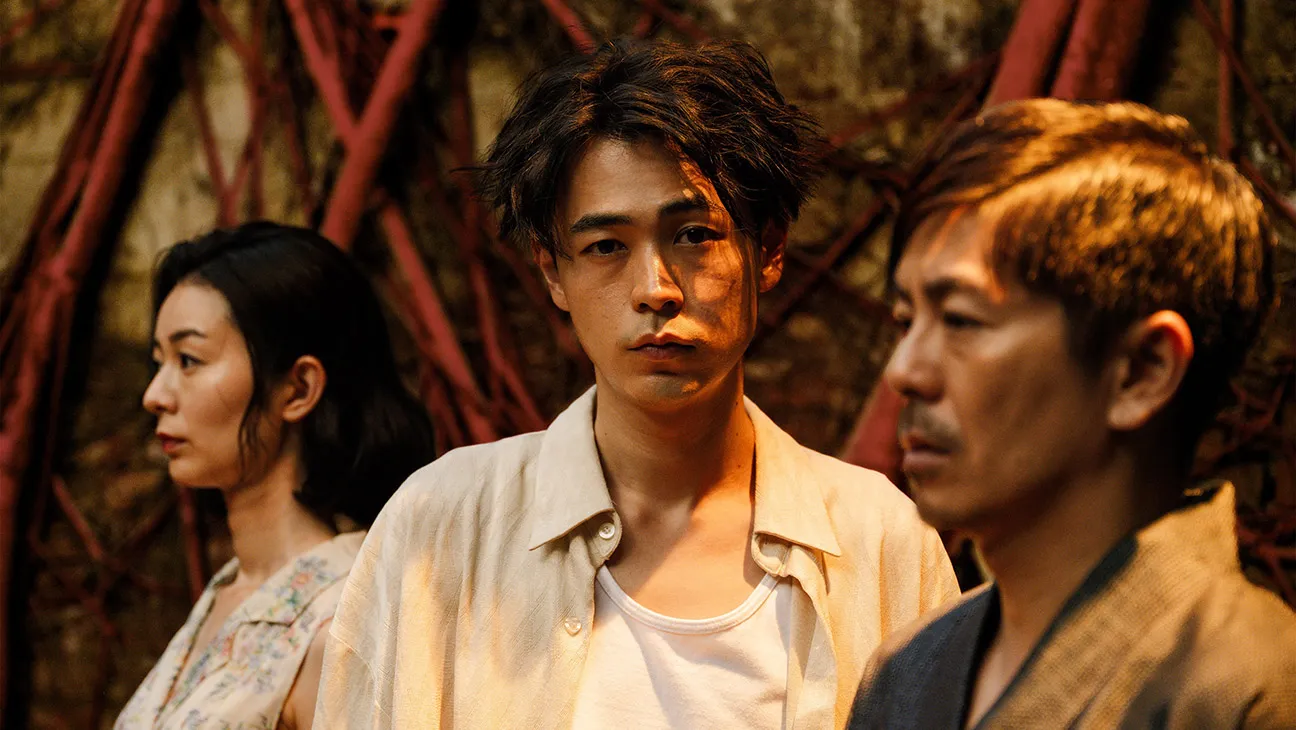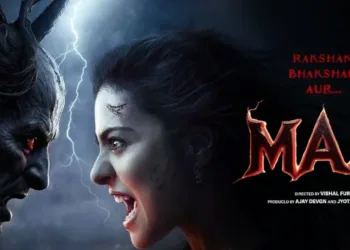Yoshiharu Tsuge is a key figure in manga, known for his ability to combine surreal imagery with personal narrative. His unique style goes beyond the rules of the genre and explores memory and trauma in a way that feels dreamlike and moving. Tsuge’s autobiographical stories take readers inside the complexities of post-war Japan, revealing harsh truths beneath layers of fantasy.
Director Shinzo Katayama aims to capture Tsuge’s surrealism while translating its spirit to film in his adaptation of Lust in the Rain. The often-split narrative structure matches the manga’s erratic flow, drawing readers into a world where fantasy and reality are mixed. Katayama’s visual style evokes the chaotic interplay of desire and horror that underlies Tsuge’s work.
But sometimes, staying true to the deeper emotional currents is hard. The film does a good job of recreating Tsuge’s mood but sometimes puts show over reflection. This begs the question of how to translate such complicated narratives into film, which necessitates visual flair and emotional depth. So, the adaptation serves as both a tribute and a reminder of how important it is to balance storytelling style and content.
Interweaving Realities: The Narrative Fabric of “Lust in the Rain”
“Lust in the Rain” is told through the lives of its three main characters: Yoshio, who wants to be a manga artist; Fukuko, who is a mysterious femme fatale; and Imori, who is a cocky writer. The narrative starts with a strange love triangle against the backdrop of a war-torn Japan, highlighted by Yoshio’s crush on Fukuko, who moves into his small apartment with Imori.
Their interactions are characterized by sexual tension and unspoken competition, creating an ideal environment for conflict. The beginning sets the scene with Yoshio as the unstable narrator, drawing the audience into a world where desire and truth are subject to change.
Yoshio’s dreams permeate the fabric of reality as the story progresses, complicating the narrative with fantastical turns. The film skillfully moves between these intertwined planes, revealing how Yoshio’s artistic visions turn into unsettling reflections of his mind.
As the horrors of war intrude upon Yoshio’s dreams, the first scenes, which are rife with eroticism and dark humor, slowly change into a haunting study of trauma. This interplay between fantasy and desire serves as a commentary on the psychological scars left by war, implying that the harshness of the outside world permanently alters personal desires.
Throughout the film, the effects of war are felt, throwing a shadow over Yoshio’s dreams. His sexual adventures, which were initially shown with a sense of humor, take on a darker tone, revealing the grotesque reality of a soldier’s mind dealing with guilt and loss.
This level of thematic depth challenges the audience to reevaluate the nature of desire in the face of destruction, prompting a reflection on how the personal and political are inextricably linked in narratives of survival and identity. The film eventually asks deep questions about the cost of desire in the wake of war as Yoshio makes his way through his chaotic inner landscape.
The Complexity of Desire: Character Dynamics in “Lust in the Rain”
An aspiring manga artist, Yoshio, who embodies the stereotype of the unreliable narrator, is at the center of “Lust in the Rain.” The character of his is a complicated look at desire, fear, and the looming threat of war. At first, Yoshio’s fantasies seem silly, but as time goes on, they reflect a darker side of him that struggles with identity and creative ambition.
His motivations fluctuate between genuine love and a desperate need for validation as he grapples with his infatuation for Fukuko, making him likable and annoying. His character arc is driven by this duality, transforming him from a passive observer to a man going through an existential crisis where his artistic goals clash violently with the harsh realities of his surroundings.
The mysterious object of Yoshio’s desire, Fukuko, is made with a unique mix of mystery and appeal. Her image veers between seductive and sinister, making her a catalyst for Yoshio’s hopes and disappointments. She represents the complexities of desire that are both seductive and dangerous, and she reflects his inner turmoil in many ways.
Fukuko symbolizes unfulfilled longing, illustrating how personal obsessions can be linked to war trauma. Her part goes beyond mere romantic interest. Yoshio is forced to confront the darker parts of his fantasies as a result of her presence, which muddies his understanding of love and lust.
The narrative landscape is further complicated by Imori, an older writer who is Yoshio’s rival. His shadow embodies the tension between artistic ambition and moral ambiguity, frequently overpowering Yoshio with a sense of confidence that is both admirable and annoying. Imori’s friendship with Fukuko serves as a counterbalance to Yoshio’s desires, emphasizing their competitive nature.
This competition raises the emotional stakes and shows how weak Yoshio’s artistic identity is. The film explores the complex web of human relationships through the interplay of these three characters, illustrating how love, ambition, and existential dread coexist in a war-torn world. The audience is invited to reflect on the frequently painful interactions between desire and reality by each character’s complexity.
A Kaleidoscope of Emotion: Tone and Style in “Lust in the Rain”
“Lust in the Rain” expertly moves between comedy, eroticism, and horror with a bravery that both confuses and captivates the audience. The film starts with a lighthearted, almost whimsical depiction of Yoshio’s dreams, where humor is mixed in with the ridiculousness of his artistic goals.
The audience is encouraged to interact with the narrative playfully through this comedic lens, which prepares the audience for a deeper look at darker themes. The tone of the story changes dramatically as it progresses, with titillating and unsettling times of raw eroticism. This contrast increases the tension by transforming seemingly unimportant scenes into unsettling encounters with blurry lines between desire and fear.
The shift from enchantment to horror is especially powerful, as the threat of war ruins Yoshio’s peaceful thoughts. As things get more and more disgusting, they reflect the chaos inside his mind, forcing the audience to deal with the tension between pleasure and pain. This dance of tones keeps viewers on edge and challenges them to reevaluate their emotional responses, creating an experience that is both intellectually and viscerally compelling.
People have said that director Shinzo Katayama’s films look a lot like the movies of Bong Joon-ho, which is a compliment to the changes in tone. Joon-ho’s signature style, in which humor and nature cohabit in a delicate balance, echoes Katayama’s ability to juxtapose the mundane with the macabre.
This director’s vision enhances the film’s thematic complexity by illustrating how the absurdities of human desire can appear in both light and shadow. Through careful craftsmanship, Katayama guides the audience through the maze of feelings that make up “Lust in the Rain,” creating a movie experience that stays with you long after the credits roll.
Echoes of War: The Cultural and Historical Context of “Lust in the Rain”
“Lust in the Rain” uses its historical setting as a potent mirror through which character motivations and actions are refracted. It is set against the turbulent backdrop of World War II. The war’s pervasive influence creates a landscape where personal desires are inextricably linked to collective desire, which permeates every aspect of the narrative.
Yoshio embodies the struggle of a generation dealing with loss and disillusionment as he navigates his artistic goals amid the chaos. The horrors around him are starkly contrasted with his motives, tinged with a desperate need for connection. The war serves as a catalyst that pushes the characters into difficult emotional terrain, dictating their decisions and relationships and serving as a backdrop.
The film’s look at trauma and memory is greatly affected by its historical setting. The characters’ narratives reflect the effects of war, which shape larger societal wounds and their experiences. Yoshio’s psyche is haunted by the echoes of war, complicating his understanding of love and identity as he vacillates between fantasy and reality. The depiction of eroticism takes on a sense of urgency, revealing how the desire for closeness can arise as a response to existential despair.
The film goes beyond just showing historical events in this way, exploring the mental effects of trauma that last long after the fighting is over. “Lust in the Rain” prompts audience reflection on how war shapes desire and identity in the wake of disaster by weaving historical threads into the fabric of its narrative.
Katayama’s Vision: A Directorial Approach in “Lust in the Rain”
In “Lust in the Rain,” Shinzo Katayama’s directing style shows a nuanced understanding of complex narratives, drawing on his previous work, which frequently grapples with identity and social conflict themes.
Katayama handles storytelling with the ambition to question viewers’ perceptions, which are influenced by a combination of Japanese and foreign cinema. His ability to mix genres—switching easily between horror, comedy, and eroticism—shows an understanding of tonal complexity and draws the audience into a deeply immersive experience.
The emotional power of the film shows how well Katayama’s choices about style worked. The chaotic interplay of reality and fantasy is successfully captured by his use of vivid imagery and disorienting sequences, drawing viewers into Yoshio’s troubled mind.
With this daring approach, he emphasizes his artistic vision and supports the film’s exploration of trauma and desire, ensuring that each frame adds to the narrative. Katayama’s work shows how powerful cinematic storytelling can be by pushing the limits while still deeply interested in the human situation.
A Sensory Odyssey: Visual and Sound Design in “Lust in the Rain”
The striking visual style of “Lust in the Rain” is a striking example of Shinzo Katayama’s artistic vision, defined by a vibrant color palette that changes between the bright, almost whimsical colors of Yoshio’s fantasies and the muted tones that reflect the encroaching darkness of reality.
This intentional contrast is a visual metaphor for the characters’ internal battles and enhances the storytelling. Rich reds and deep blues pulse through scenes of desire, while ashen grays enter scenes of despair, creating a dynamic interplay that captures the emotional upheaval of the narrative. Each frame is painstakingly made, transforming the mundane into the extraordinary and luring viewers to linger on the details that reveal deeper truths about the characters’ minds.
Along with this visual beauty is a soundscape that skillfully ties together the film’s audible parts. Audiences are sucked into a world where quiet can be as loud as the din of war, thanks to the sound design, which is crucial to setting the scene. Soft background sounds create a sense of place, and jarring effects add to the emotional tension during tense times.
The haunting music, a mix of sad melodies and dissonant chords, echoes the film’s themes of trauma and sadness. It enhances the narrative arc by taking the audience through the different parts of Yoshio’s experience and enhancing the significance of important scenes. The photography and sound design work together to create an experience beyond simple storytelling and invite viewers on an emotional journey that stays with them long after the movie.
The Review
Lust in the Rain
"Lust in the Rain" is a daring exploration of desire and trauma, expertly fusing desire, eroticism, and humor against a backdrop of war. Creating an immersive experience that challenges traditional narratives, Shinzo Katayama's direction is highlighted by its striking visuals and haunting sound design. In particular, Yoshio, Fukuko, and Imori represent the complicated interplay of personal and social scars in their complex characters. The nature of love amid chaos is the film's subject, which captivates and provokes deep reflection.
PROS
- Striking cinematography and a vibrant color palette enhance emotional depth.
- Well-developed characters with intricate motivations add layers to the narrative.
- Seamless transitions between comedy, eroticism, and horror keep audiences engaged.
- A powerful score and immersive soundscape create a captivating atmosphere.
CONS
- Some parts may feel slow or meandering, affecting narrative momentum.
- The film's complex themes may leave some viewers feeling confused or unsatisfied.
- Explicit scenes might not be suitable for all audiences, limiting its accessibility.



















































